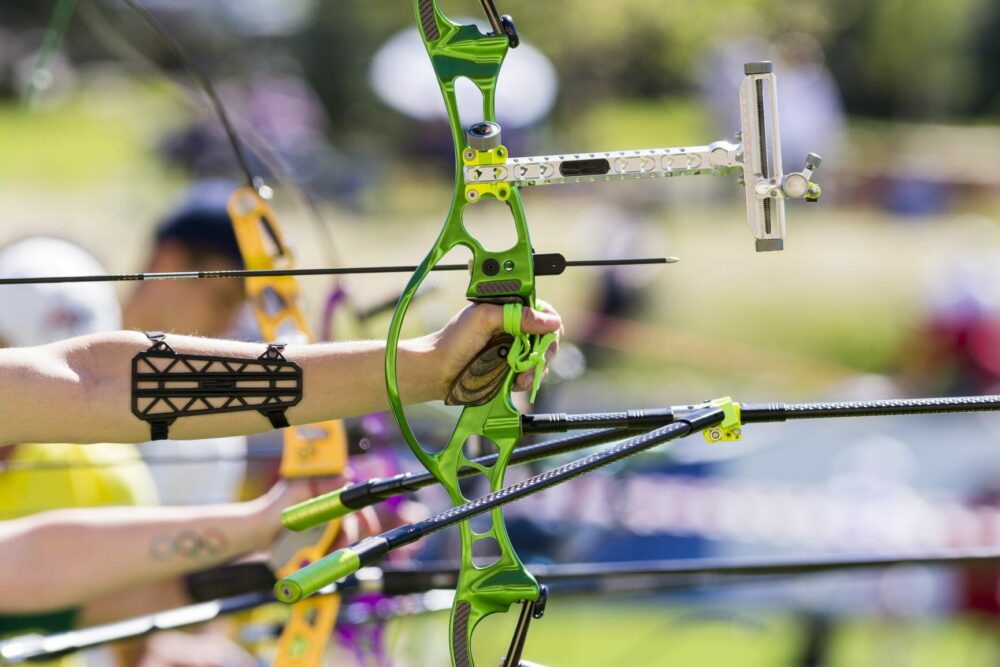How accurate is a recurve bow?
A recurve bow is about as close to a survivalist and self-reliant hunting bow that you can get without completely abandoning technology and picking up a stick in the woods and carving it yourself. They do take a lot more effort to learn to use, you need more technique and artfulness than even a compound bow. That being said they are often lighter and easier to carry which can be an advantage on a hunt.
However, they do require more upper body strength to draw and hold, you must also be closer to your target than with other bows, which requires technique and talent, you need a lot more practice to be efficient with this bow.
When it comes to competitions though, scores shot with recurve bows are often lower than those that are shot with compound bows, most archers will find it faster and easier to achieve accuracy with a compound bow than a recurve bow.
Part of this is in the difficulty and complexity of using a recurve bow, the training and skills needed, but they are also just a lot harder to use which can affect the accuracy, a pro recurve archer will always get a better shot than someone who is not as experienced. They can be very accurate, but not as much so as some of the alternatives.

How powerful is a recurve bow?
A recurve bow is also known as a traditional bow because it is used around the world in a different form of shapes from the beginning of the time in which bows were first used. It is straight forward in design and only has a bow frame, although it sometimes has a single part, sometimes a three part and sometimes a single string.
The main feature that will help you distinguish this bow from others is how it curves away from the archer at the ends, hence the name recurve.
In its strength it not as potent as a compound bow. The optimal weigh for either a compound of a recurve bow is 70 lbs, you can accomplish almost anything with this type of power. Although if everything else about this bow remains constant then you will not get the same power from either bow.
The compound will give you a better performance than a recurve bow simply because of the string and pulley arrangement. Though it is not as powerful as a recurve, and thus meaning you will need to get closer to the target than with alternative bows, this does not mean it should not be an option.
A recurve bow lacks the power that other bows have, and it also needs a lot more practice to learn to use properly. However, they are still powerful bows that can work fantastically with enough practice, it just means you need to dedicate yourself to the art of using it.
What is the point of a recurve bow?
A recurve bow is a bow with limbs that curve away from the archer when they are unstrung. A recurve bow stores more energy, and also delivers this energy more efficiently than equivalents like the straight-limbed bow, this has the potential to give a greater amount of energy and speed to the arrow.
A recurve bow will permit use of a shorter bow than with a straight limb bow, providing better arrow energy. In times past, this form was often used and preferred by archers in environments in which longer weapons could be too cumbersome, such as in brush, forest terrains or while on horseback. It is a more ‘old-timey’ traditional bow that was used much for hunting when supermarkets weren’t an option and food was caught by hunting.
This is a typical bow as is used by many archers in competitive sports, such as Olympic archery. If you wanted to do archery in the Olympics you would have to feel comfortable working with a recurve bow as it is the only bow type that is permitted for use in this sport.
Though there is movement that is said that it may soon include compound bows, since its technology is more available and widespread which makes competitive tracking and testing easier.
The recurve bow is the most widely used bow in Europe and Asia in sporting archers. Modern recurves are often ‘take-down’ bows, which have limbs that can be detached from the riser for easier transportation, storage and interchangeability.
What recurve bow should I buy?
When you are choosing a recurve bow you need to consider many things but one of the most important things is what you are going to use it for. If you are using it for target practice only then pretty much any bow will do. There is nothing specific that you can look at, you could even take a browse at beginner bows to get used to the feel of a recurve bow.
However, if you want to use your bow for hunting then you need to consider your options, while every bow is suitable for target practice not all are suitable for hunting. The biggest factor that will be considered here is the draw weight on the bow.
Draw weight refers to the amount of force that you need to apply to the bow string in order to pull it over a distance of 28”. The higher the draw weight on your bow, the more powerful it will be and the further your arrow will travel. When you are hunting your arrow will need to go through skin, fat and occasionally bone, so you need a good draw weight for speed and strength.
While there are a few different factors that are key in the deciding of what recurve bow you buy the purpose is the most imperative because if you do not have a sufficient draw weight for hunting then your hunts will be unsatisfactory, and you will end up going home not having hit your target.

